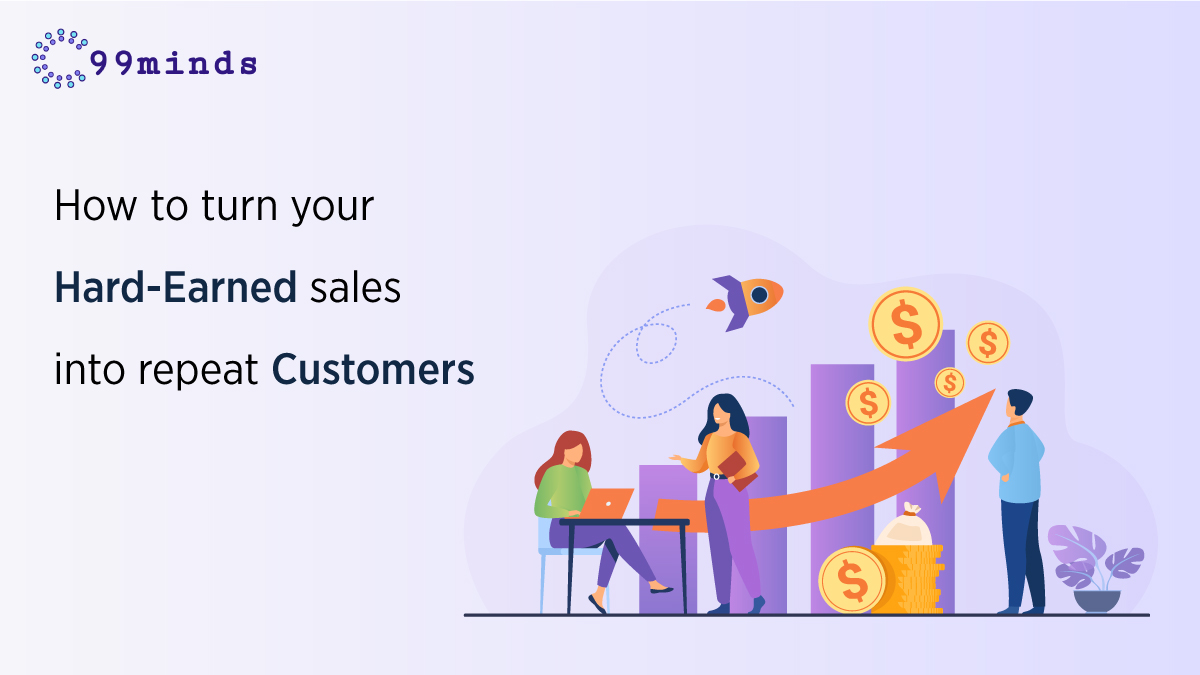
Mrudul

There are two major strategies to expand your company. The first is to keep acquiring new customers.
Although the first method may work for a short time, it is not long-term or cost-effective. Customer loyalty programs are still one of the most influential and successful strategies to boost the lifetime value of your customers. The rationale for this is that it’s a virtuous cycle: if you reward your clients for choosing you over our competition, they’ll be more likely to choose you over them next time.
Repeat customers are substantially more valuable to your company than new customers because they are more likely to bring in more earnings. According to studies, 20% of your repeat clients are responsible for over 80% of your future income! As a result, businesses must begin concentrating more on maintaining existing consumers, converting them into loyal customers, and boosting their lifetime business value.
Let us discuss some innovative ways to retain your new customers and turn them into repeat customers for your business:
An effective customer loyalty program can help you keep your current clients and transform them into repeat customers. Compared to other customers, a customer who is a part of your loyalty program is 47 % more likely to make another purchase from you.
The primary reason for this is that loyalty programs can make your customers feel more valued, powerful, and connected to your company. This kind of relationship gives the correct kind of motivation for your customers, encouraging them to buy more from you.
Brands that have categorized their existing consumers and mapped the customer lifecycle are likely to know how long first-time buyers take to make a second purchase on average. The purpose of your post-holiday strategy is to reduce the time it takes new holiday customers to make a second purchase, increasing the possibility that they will become higher-value, long-term clients.
While the duration between purchases will vary depending on the company, product, and length of the sales cycle, some suggest that new consumers should be urged to make a second purchase within 45 days after their Holiday order.
Enrolling new consumers in your loyalty program has been proved to speed up their second purchase.
Who doesn’t enjoy deals and discounts? It’s a given! As a result, if you haven’t done so already, you should begin using incentives and discounts to keep your consumers.
Discounts may not be the ideal solution for your company if your margins are tight. Offering new consumers discounts after their first purchase, on the other hand, can be quite rewarding.
Delight your loyal consumers by implementing a variety of discount and incentive strategies.
Customer feedback is critical to any business’s ability to provide a positive customer experience. You can be unsure of what your customers want if you don’t get good customer feedback.
Because most customers will not come to you and tell you what new features they would like, customer feedback should be proactive rather than reactive. It is your job to approach them and enhance your current products in accordance with their suggestions.
Customers should feel appreciated, served, and valued after they receive their orders. Maybe even a smidgeon of opulence. Make them happy that they purchased your item.
A simple thank you is the first step. Make a thank-you phone call part of your usual delivery process to ensure that the consumer is entirely happy if you’re selling a high-value item. Include a personal touch, even if the object is small. A handwritten letter may be the best option depending on what you sell, but a sticker on an invoice or shipment is also a good choice.
It may appear simple, but this is where loyalty begins: by consistently meeting the most basic customer service expectation. When someone places an order with your store, they expect it to arrive on schedule and in acceptable shape.
Suppose your fulfillment systems are shoddy, and you frequently receive complaints about delivery delays or damaged merchandise. In that case, it’s your job to fix the problems so that customers get the service they deserve.
For a distinct segment of your audience, social media accomplishes many of the same purposes as email. Post deals, tips, answers, resources, blog posts, inspiration, and entertaining elements like polls and quizzes, just like you do in emails. Have extensions that allow you to connect your store to social media sites like Pinterest, Facebook, and Instagram.
Your package doesn’t have to be a plain brown box wrapped in bubble wrap. You might want to spend a little more money on packaging that is both innovative and stunning. Include a free surprise present.
Make the gift branded and something they’ll likely keep and see on a frequent basis to drive customer loyalty, repeat sales, and referrals: coasters, stickers, pens, keychains, mugs, magnets.
When content marketing solves issues, answers questions, or makes life easier in some way, it is most effective. Blogs are ideal for this.
You’ll have a collection of great information you can share with existing customers across all media channels if you can merely write four blog entries every month – one per week. This will help you stay in front of your customers’ minds, drive repeat purchases, and boost referrals.
Retargeting is a method of only showing online adverts to persons who have already visited your website. As a result, the adverts are more targeted, focusing exclusively on people who have expressed an interest in your company.
Retargeting is effective for people who visit your website but do not make a purchase. But it works just as well — if not better — on former clients. This is simply another approach to keep your name in front of their minds.
Every business relies on repeat consumers.
To sum up, recurring clients, whether B2B or B2C, are much more profitable for any organization. You may increase your company’s income and profitability by focusing the majority of your resources on customer retention initiatives.
Providing the finest possible customer experience and assistance is the most critical technique for converting new clients into recurring customers. You can increase your lead to repeat customer conversion rates by enhancing your customer experience techniques.